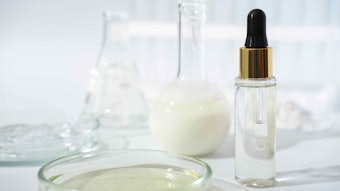Researchers have sourced fragrance ingredients that could provide a natural alternative to N,N-diethyl-m-toluamide (DEET), one of the most frequently used actives in insect repellents. Although DEET effectively repels mosquitoes and ticks, some agencies have questioned its effects on the environment and its skin irritation potential.
In May 2008, the US Centers for Disease Control recommended the use of DEET, picardin, lemon eucalyptus and IR3535 to repel mosquitoes from human skin.1 However, both the US Environmental Protection Agency (EPA)2 and the Pesticide Information Project of Cooperative Extension offices at Cornell University3 have found DEET to produce dermal and neurological reactions in humans. With ongoing debate regarding the safety of DEET, an equally effective but safer alternative would prove beneficial (and lucrative).
While searching for a compound to repel insects from coffee beans, Aijun Zhang, PhD, and his team at the US Department of Agriculture (USDA) stumbled upon what they believe to be a safe, cost-effective active for insect repellents.“We discovered a fungus that repelled insects from the coffee bean,” explained Zhang, who added that a volatile or some other chemical from the fungus was providing this effect. After comparisons with a control, the team isolated the compound: isolongifolenone.
Zhang then explored sources from which the compound could economically be obtained. “I did some research to see if it existed naturally,” said Zhang, who found the compound present in the leaves of Humiria balsamifera (tauroniro), a tree from South America. However, according to Zhang, isolating the compound from the tauroniro tree can be expensive, so he sought other sources.
An Evergreen Answer
“When I [searched the] literature, I found that isolongifolenone is not used in the pharmaceutical or cosmetic industry,” said Zhang “but its derivative, isolongifolene, was discovered by the USDA 50 or 60 years ago, and has been used by the perfumery industry for a long time.” In perfumery, isolongifolene is incorporated into products for its woody scent. Zhang adds, “We [also] discovered that ... isolongifolene can be synthesized from pine oil.”
Zhang currently is seeking a pine oil with a high enough isolongifolene content to synthesize isolongifolenone for commercial use. “If it contained 50% isolongifolene, I could easily make the compound,” said Zhang. In the meantime, he is testing pine oil from the Humiria balsamifera (tauroniro) tree to determine the material’s efficacy.
Efficacy Testing
If evidence of the efficacy of isolongifolenone as an insect repellent could be shown, Zhang reasoned he could synthesize isolongifolenone from isolongifolene. Tests were thus conducted against two species each of ticks and mosquitoes. First, a mosquito bioassay involved maintaining mosquitoes on skin with sucrose and water before applying the test compound to the skin. After application, if the mosquitoes fed, the repellent was deemed ineffective.
The researchers also conducted the Klun and Debboun assay. “This method included a module of six small wells containing warmed red blood cells covered with a collagen membrane,” explained Zhang. Researchers placed a cloth on top of the membrane treated partially with the compound and partially with a control. The experiment was repeated with DEET. In both tests, the researchers found the isolongifolenone compound effectively deterred the mosquitoes from biting, almost 10% more than DEET.
“The average feeding deterrent of DEET is about 80% for Aedes aegypti [the yellow fever mosquito], whereas the test compound averaged about 90% for that mosquito. For Anopheles stephensi [the malaria mosquito], nearly 65% were deterred by DEET, compared with 75% by isolongifolenone.”
In addition to mosquito assays, the team conducted a tick bioassay with Ixodes scapularis, the deer tick. In this assay, a human finger is treated with either a repellent or a control and ticks either bite or drop off. The results showed that isolongifolenone effectively deterred ticks from biting.
The researchers investigated other repellent functions for the compound as well, noting it effectively deterred stable flies and could therefore be formulated into products to protect horses. His team currently is collaborating with Rutgers University to determine whether the compound could repel bedbugs, which Zhang says are “very difficult to control.”
The benefits of the compound are many, according to Zhang. In addition to its natural origin, the compound does not dissolve materials like plastic, which DEET can. Zhang also notes the compound is safe on skin and does not pose a hazard to the environment.
References
1. Updated information regarding insect repellents, Centers for Disease Control and Prevention, May 8, 2008, available at: www.cdc.gov/ncidod/dvbid/westnile/repellentupdates.htm (Accessed Apr 17, 2009)
2. Reregistration eligibility decision: DEET, US Environmental Protection Agency, Office of Prevention, Pesticides and Toxic Substances, Sep 1998, 39–40, available at: www.epa.gov/oppsrrd1/REDs/0002red.pdf (Accessed Apr 17, 2009)
3. DEET, available at: http://pmep.cce.cornell.edu/profiles/extoxnet/carbaryl-dicrotophos/deet-ext.html (Accessed Apr 17, 2009)










